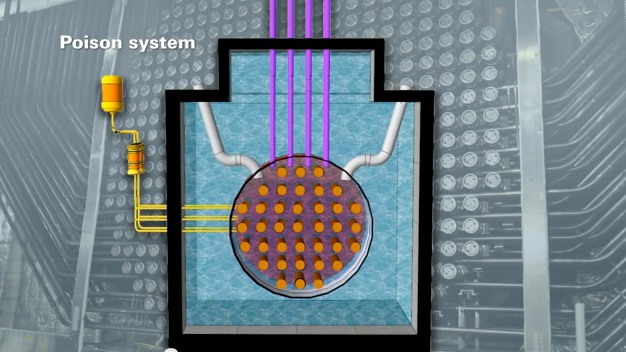Safety cases and probabilistic safety assessments
July 20, 2015
All nuclear power plant operators in Canada must present a strong safety case to obtain a licence from the CNSC.
A safety case represents the collection of evidence demonstrating the facility is safe and showing that there are no unreasonable risks.
The safety case includes documents detailing how regulatory requirements are met or exceeded. These documents cover all major safety areas, such as physical design, human performance management, safety analysis, waste management and radiation protection.
The safety case is maintained and updated throughout the facility’s lifecycle.

Watch CNSC's nuclear power plant safety systems video
For nuclear power plants, safety cases also contain a detailed safety assessment. This assessment includes both a deterministic and a probabilistic safety assessment (PSA).
- What a PSA accomplishes
- Assessment levels
- Current advancements in PSAs in Canada
- Implications for day-to-day operation
- Limitations
What a PSA accomplishes
A PSA answers the following questions:
- What could go wrong?
- How likely is it?
- What would the consequences be?
These assessments help us better understand each nuclear power plant and identify specific vulnerabilities, as well as potential safety improvements.
A PSA is a relatively new way to evaluate reactor safety. It was introduced to the Canadian regulatory framework in 2005. Read REGDOC-2.4.2, Safety Analysis: Probabilistic Safety Assessment (PSA) for Nuclear Power Plants.
A PSA complements deterministic safety analysis to provide a more thorough picture of reactor safety.
Assessment levels
The CNSC requires two levels of assessment.
Did you know?
The PSA completed for OPG’s Darlington Nuclear Generating Station in 2011 led to safety improvements such as the addition of an emergency power generator (to ensure uninterrupted power supply to critical safety systems) and the installation of a containment filtered venting system (to limit the consequences of a radioactive release in the unlikely event of a Fukushima-type accident).
Following TEPCO’s Fukushima accident, the CNSC required all nuclear power plant operators in Canada to acquire portable emergency power generators to complement existing standby power generators, fixed emergency power generators and emergency batteries. The portable generators provide another way to bring reactors to a safe shutdown state during a severe accident.
Level 1 analyzes the sequences that could lead to reactor core damage.
At this level, the focus is on plant responses to different types of accidents, whether they are initiated by external events (such as earthquakes or floods), internal events (such as system malfunctions) or human error.
Level 2 examines the containment response in case of an accident leading to severe damage to the core, and the behaviour of fission products within the containment.
It also assesses the likelihood and magnitude of potential radioactive releases to the environment following an accident.
Current advancements in PSAs in Canada
The CNSC is one of the few international regulators that require full-scope Level 1 and Level 2 PSAs.
TEPCO’s Fukushima accident has shown the importance of considering low-frequency, high-consequence events.
As part of the lessons learned from this event, the CNSC is requiring nuclear power plant operators to review their existing PSAs to take into account site-specific external events and their potential combinations, as well as events involving irradiated fuel bays.
The CNSC also is leading international efforts to produce PSAs which aggregate the risks for multi-unit stations.
Day-to-day operation

Workers performing maintenance at the Darlington Nuclear Generating Station
PSA results have implications for the day-to-day operation of existing nuclear power plants.
They are used, for instance, to optimize testing and maintenance strategies to focus on the components most important to safety.
PSA results also help CNSC staff focus their inspection and oversight efforts.
Limitations
PSAs have their own limitations, which is why they are used along with other types of assessments in the safety case.
For instance, it is hard to model all the dependencies between systems, and to properly account for human actions (especially when it comes to procedures for managing severe accidents).
Important inputs to the safety case include thorough analyses of defence in depth, safety margins, code adherence and safety culture.
Related links
Page details
- Date modified: